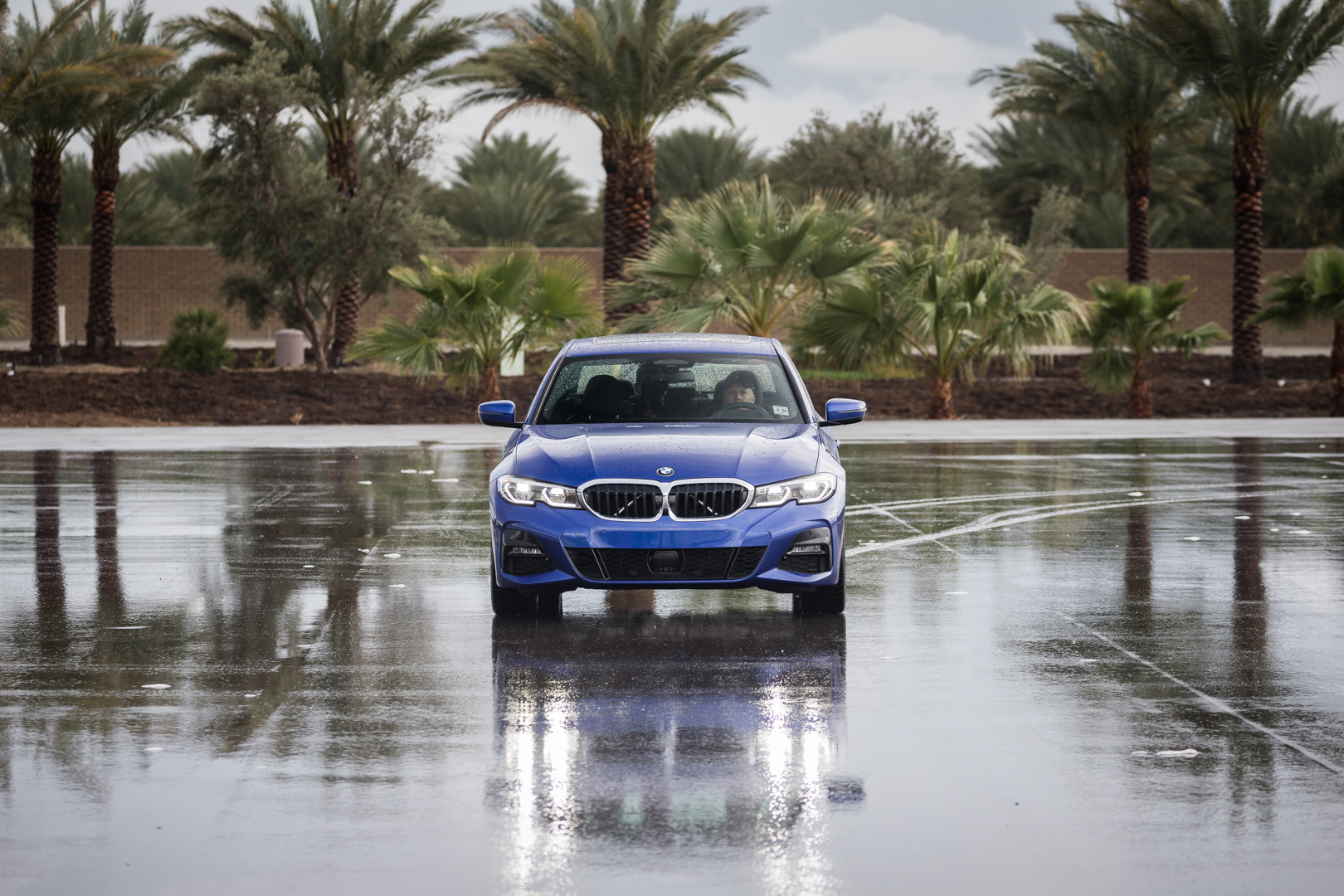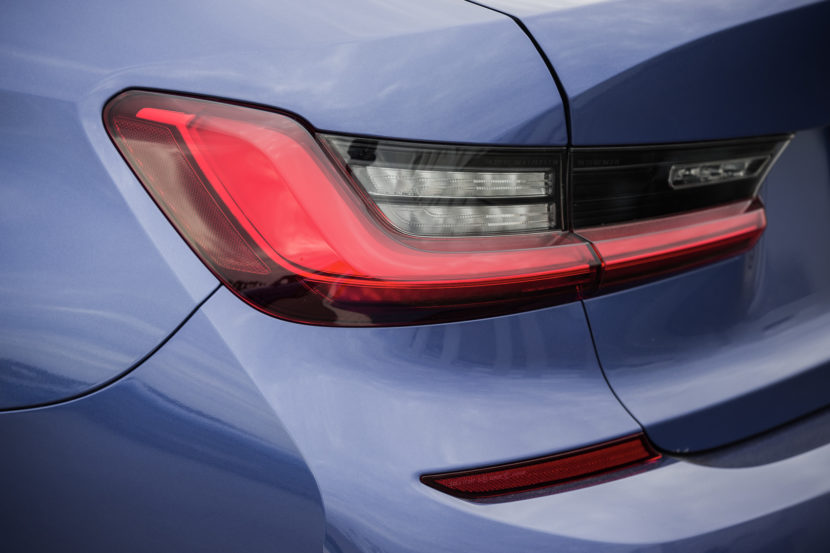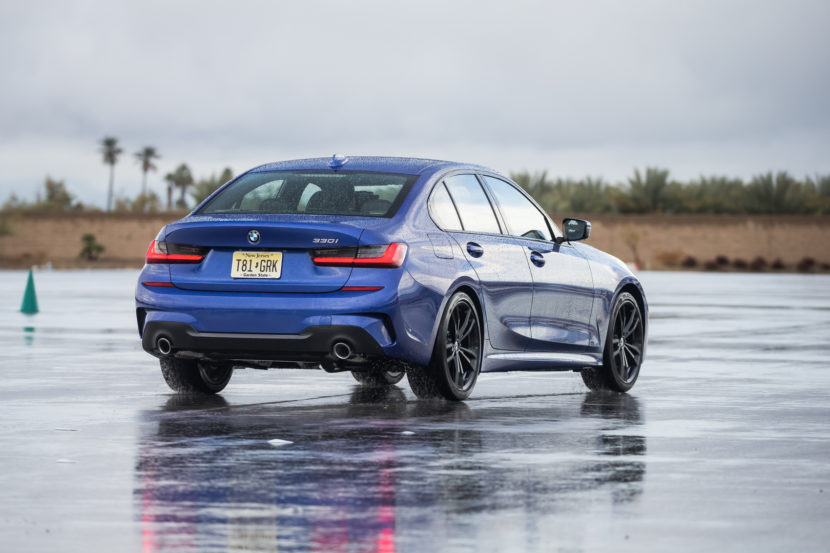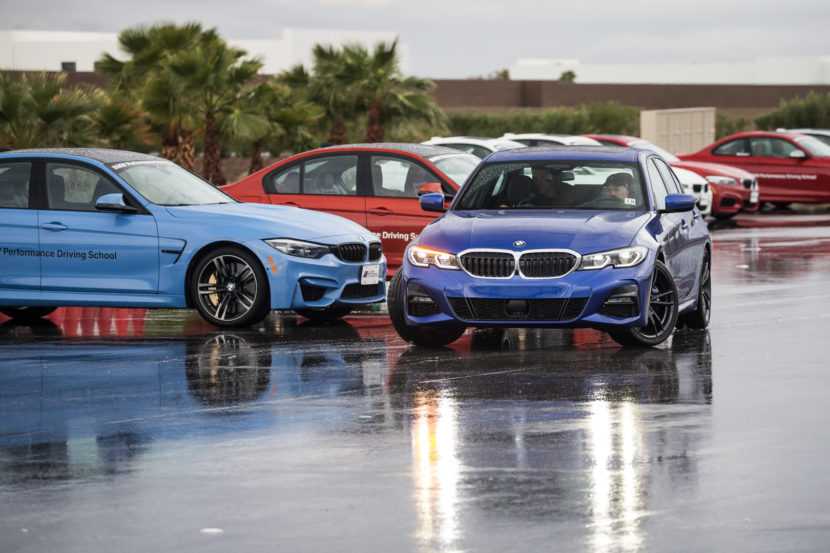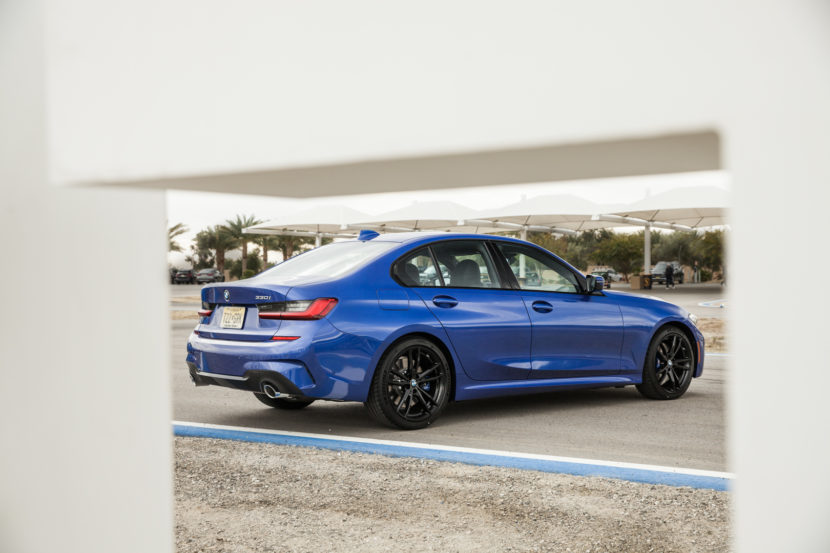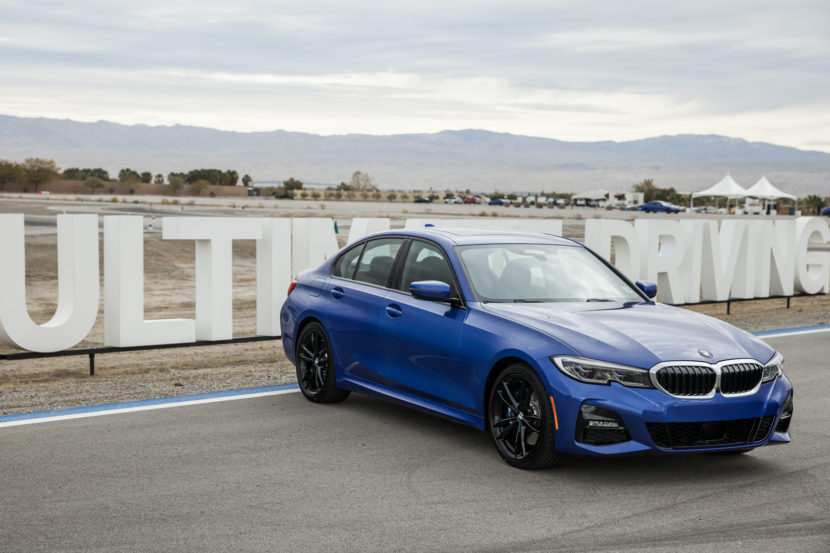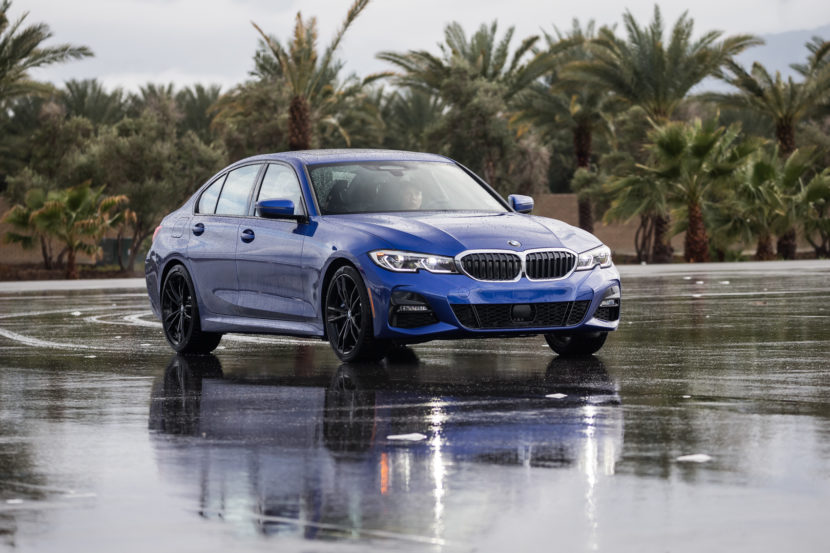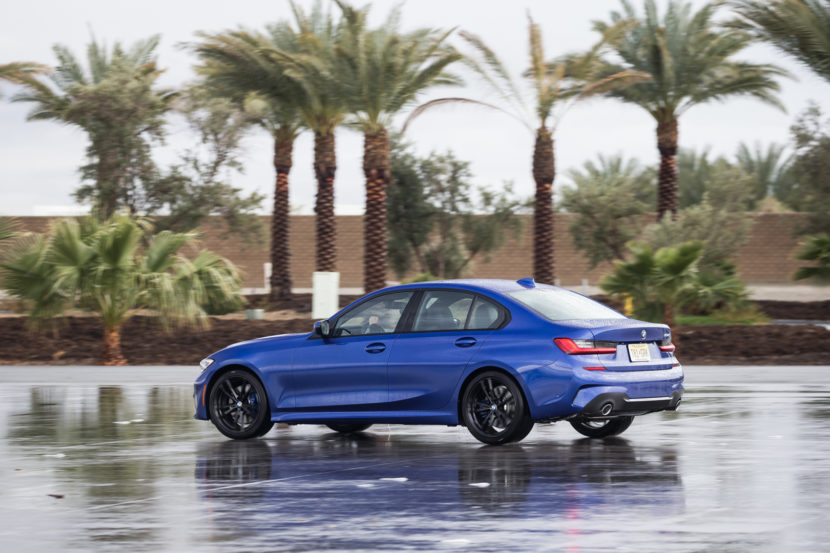Of all the cars I had the chance to sample at this year’s Test Fest, the one I was most excited to drive was the BMW 330i. The entry-level version of the newest 3 Series is not particularly fast, extraordinarily good looking or exclusive in any way. However, it was the car I was most curious to get in and drive. Why? Because it’s been said to mark the return of the qualities that we so fondly remember in its predecessors, qualities than seemed to have been lost on the last-generation 3er. And I wanted to find out if the 3 Series we know and love was really back.
What is the BMW 330i?
By now, you probably know quite a bit about the new G20-generation 3 Series. So I’m not going to rehash every last detail of the new car (If you want a more comprehensive read on the new G20, go here). However, I will give you a quick refresher course on the 3 Series and, more specifically, the 330i.
So the new G20-gen BMW 3 Series is based on BMW’s new CLAR (Cluster Architecture) platform. When we recently spoke with BMW’s Chief of Engineering Klaus Fröhlich, he said that one of his main goals with the new 3 Series was chassis stiffness. He wanted the car as absolutely rigid as possible. And you can feel it. It feels solid, like a bank vault made of granite. That solidity helps it feel more comfortable, more stable and more agile, while also allowing for better chassis communication to the driver.
Another big point of emphasis for Fröhlich was feel. Frankly, he was seriously annoyed with all of the complaints stemming from the F30 3er’s lack of communication and feel. So he had his 3 Series team set out to improve on those areas specifically and dramatically. The results have been quite extensively covered, from the new lift-related passive dampers to the newly revised variable steering ratio. Both of which were main priorities during my testing.
Why the BMW 330i over the M340i?
Earlier, I mentioned that the 330i was the car I was most excited to drive. What about the BMW M340i, you ask? While that’s a brilliant car, and the car I probably had the most fun in that day if I’m honest, the 330i is going to be the volume seller. It’s going to be the one most customers are going to actually buy, being it’s the entry-level model.
It’s important that even the entry-level 3ers are fun to drive, too. In fact, I’d argue it’s just as important for the more average models to be fun as it is for the performance models. With 3ers like the E36 and E46, even regular 320d and 325i models were fun to drive, despite not having a ton of power. So it’s important that 330i customers won’t suffer for fun. Which is why the 330i was my priority over its M Performance sibling.
What’s it Like to Drive?
Unfortunately, there weren’t any BMW 330is on track for us to drive, so at-the-limit driving was out of the question. We were, however, able to drive the 330i on the roads surround The Thermal Club. Even more unfortunately, the fun, twisty route we had was shut down due to road work. So we had to take the more straight and boring, yet quite scenic, route. While driving to the Salton Sea was beautiful, the roads that took us there were boring, straight and filled with traffic.
Having said that, I was able to sample some of the twisty route before having to turn back around at the road work. During my brief time on the twisties, I learned enough about the 330i to make a quick analysis: it’s very good. Steering is sharp and responsive but not overly twitchy. It’s balanced and neutral and reminds me a lot of the E46, actually. While it doesn’t have that sort of feel or feedback obviously, and it’s a bit lighter in weight, its response feels similar. Or at least as similar as I remember an E46 feeling like. It’s admittedly been a little while since driving one last.
Having said that, it feels better than F30 3 Series — sharper with nicer weighting and a more positive response — and that’s the important bit. The biggest improvement with this new car’s steering over the outgoing car’s is with its variable rack, though. This new variable-ratio steering rack has been designed to be more linear in its progression. So rather than having a speed-dependent ratio change, it’s solely lock-dependent. In a nutshell, the more steering lock you apply, the faster the steering gets. On the move, it now feels much more confidence-inspiring, more predictable. That allows you to trust the front end more and dive into corners faster. It ultimately makes the car far more enjoyable to drive than the old one.
The other big talking point for the new 3 Series is its new passive damper setup. BMW pushed its new lift-related dampers hard in the G20’s marketing but they’re not just gimmicks to put on brochures. The BMW 330i tester I had was a rear-wheel drive and on those non-adjustable lift-related dampers. For a long time, I’ve wished BMW would just set up a single suspension properly and let us drive it, without having to put the car in any specific mode to actually enjoy it. That wish has finally come true.
Over the rough roads surrounding Thermal, the 330i simply shrugged off bumps in a manner that would make a 5 Series jealous. I’m talking genuine comfort, not just comfort for a sports car. In fact, when I first set off and drove over some pretty uncouth tarmac, I was almost worried about how comfy it was. Surely if it was that comfortable, it must be sloppy through corners, right? Wrong. In fact, it’s great through corners.
Through some of the long, fast sweepers, it has the old-school BMW feeling of riding on rails. Almost as if it’s suction-cupped to the road. Little roll, ample grip and impressive composure make the new BMW 330i feel like a proper 3 Series. In tighter stuff, it rolls just a bit but not anywhere near enough to upset the car or its passengers. Personally, I like a bit of roll because it allows me to feel the weight transfer better and feel what the car is doing.
Engine, We Haven’t Even Talked Engine
The biggest reason to look down on the BMW 330i is its engine. Not that you should, mind you, but some people will. The 330i isn’t a cheap car but it only comes with a 2.0 liter turbocharged four-cylinder engine. That said, the little turbo four-pot is more punchy than any enthusiast will actually need in the real world. With 255 hp and a very healthy 295 lb-ft of torque, the 330i is surprisingly quick, nailing 60 mph in just over five seconds.
That peppy engine is paired with the ubiquitous eight-speed automatic and it’s as brilliant as it always is. My test car was rear-wheel drive, thankfully, but xDrive all-wheel drive is available.
When driving hard, the engine is a willing companion and it never feels as if it’s working hard or that it doesn’t want to play. It doesn’t sound brilliant, as it sort of just sounds like a generic turbocharged four-cylinder, but it’s angry enough to make spirited driving fun. Noise aside, though, it’s punchy and smooth and makes easy work of driving quickly.
Is it True, is the 3 Series Really Back?
Personally, I’d say the new G20 BMW 3 Series is a massive step up from its predecessor. It looks better (though, there are still a lot of fans split on its styling), has a great interior packed with superb tech and drives better than any 3 Series in recent memory.
More importantly, it’s a 3 Series that feels like it should, like the 3 Series’ we love and remember from the glory days of BMW. It doesn’t need anything to be set up a certain way to be fun. You can just get in, start it up and go. There’s a ton of tech but it hides in the background, letting you just drive.
Are there complaints? Not really, to be honest. I’m not saying it’s perfect, just that my short drive didn’t reveal a single standout flaw I can recall. I’m sure a longer test (which is coming) will reveal a few niggles, as it does with all cars, but in my quick drive the BMW 330i was an incredibly well-rounded sport sedan and one that harkens back to the good ole days of BMW. Which is more than good enough for me.
So is the BMW 3 Series back? To paraphrase the immortal John Wick — Yea, I’m thinking it’s back.


